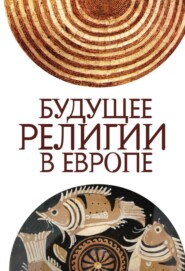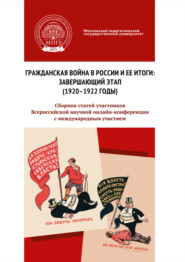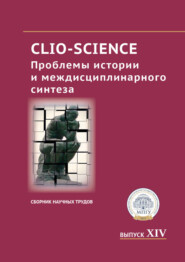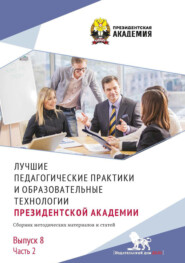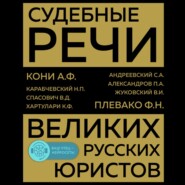По всем вопросам обращайтесь на: info@litportal.ru
(©) 2003-2024.
✖
Актуальные вопросы лингвистики и лингводидактики: традиции и инновации. Часть 3
Настройки чтения
Размер шрифта
Высота строк
Поля
The impact of spatial orientation on human thought and, in particular, our understanding of time has often been noted. Lakoff assumes that our metaphorical understanding of time in terms of space is biologically determined: “In our visual systems, we have detectors for motion and detectors for objects/locations. We do not have detectors for time (whatever that could mean). Thus, it makes good biological sense that time should be understood in terms of things and motion.” We need spatio-physical metaphors to speak about time in the same way that we need concrete metaphors to speak about other internal states such as emotions or thoughts. We also address the relationship in cognition and language between space and time. The universality of concepts or categories of space and time has been a key trope of Western thought since the philosophical reflections of Immanuel Kant. In many, if not most, languages, space and time are linked by metaphorical mapping relations. It has been proposed that such mappings reflect a universal conceptual “time is space” metaphor, based upon asymmetries in the nonlinguistic representation of space and time. We noted that spatial metaphors for time abound in the languages of the world, and this has led some cognitive scientists to propose that the “time is space” conceptual metaphor is a human cognitive universal. It is indeed the case that most, perhaps even all, languages have some words that are used with both spatial and temporal meanings; but not all of these are readily classifiable as metaphoric usages, and it is often difficult to decide whether single-word usages involve metaphor or metonymic fusion. To rigorously test the hypothesis that space–time metaphor is universal, we need to focus on usages that are systematic and unambiguously metaphoric in nature. For example, time passes or flows. This has been called the moving time metaphor. Sometimes, it is not time as a “thing,” dimension, or moment that moves, but events in time, as in “my birthday is approaching.” In a complementary schema, the moving ego schema, the speaker “moves” toward an event, as in “he is approaching his birthday.” Moving time and moving ego are the two possible variants of passage metaphor; the movement either of an event past the deictic center, or the deictic center past an event. Positional metaphor relies for its intelligibility on the shared understanding by speaker and hearer of the metaphoric orientation of a timeline in the front–back, vertical, or horizontal plane. In English, the future is ahead and the past is behind. “The best is before you” means that the best is waiting in the ‘future.’ In Azerbaijani and Russian it is the same very often. “The best is before you” is translated into Azerbaijani as “?n yaxsisi s?nin qabagindadir, y?ni ir?lid?dir, g?l?c?kd?dir”. It is the same as English. Or into Russian as “самое лучшее перед вами”. This is also the same as English.
But this is not the case in all languages. For the Chinese speakers, qian suo wei jian ???? “it has never been seen before” refers to the event that has never been seen in the past. In the Aymara language family of the Andes and in Yucatec Maya, the timeline orientation is reversed, so that, for example, in Yucatec Maya “my old age is behind me,” means it is in the future. Recall that in Yucatec Maya, there are no equivalent terms to “before” and “after” and it seems that passage metaphors are also absent.
How is the domain of time learned, represented, and reasoned about? Certainly some elements of time are apparent in our experience with the world. From experience, we know that each moment in time only happens once, that we can only be in one place at one time, that we can never go back, and that many aspects of our experience are not permanent (i.e. faculty meetings are not everlasting, but rather begin and end at certain times). In other words, our experience dictates that time is a phenomenon in which we, the observer, experience continuous unidirectional change that may be marked by appearance and disappearance of objects and events.
These aspects of conceptual time should be universal across cultures and languages. Indeed, this appears to be the case. In order to capture the sequential order of events, time is generally conceived as a one-dimensional, directional entity. Across languages, the spatial terms imported to talk about time are also one-dimensional, directional terms such as ahead/behind, or up/down, rather than multi-dimensional or symmetric terms such as shallow/ deep, or left/right. Aspects of time that are extractable from world experience (temporally bounded events, unidirectional change, etc.) may be represented in their own right. However, there are many aspects of our concept of time that are not observable in the world. For example, does time move horizontally or vertically? Does it move forward or back, left or right, up or down? Does it move past us, or do we move through it? All of these aspects are left unspecified in our experience with the world. They are, however, specified in our language ± most often through spatial metaphors. Whether we are looking forward to a brighter tomorrow, falling behind schedule, or proposing theories ahead of our time, we are relying on spatial terms to talk about time. The correspondences between space and time in language may afford us insight into how the domain of time is structured and reasoned about.
Time-moving metaphors identify the events temporally ordered with another in the time line. In time-moving metaphors, time can be conceived of as preceding and following one another in which time flows from the future via the ego, the point of reference, to the past. In this metaphor, the future is in the back and the past is in the front. For example, ‘The final exam is before Tuesday’ in which ‘before’, a space term, indicates ‘the final exam’ is proceeding ‘Tuesday’. Therefore, the final exam is in the relative the past and Tuesday in the relative future.
Only the “good” geometrical gestalts of a straight line and a full or partial circle are used as spatial shapes of the time-line. Atypical and irregular shapes are much less compatible with our experience of time, although we may think of “creative” metaphors such as The new year stumbled upon us or The old year fluttered away, which, however, suggest a particular manner of motion rather than a specific shape of the time-line. The straight line with its potentially open ends provides an ideal template for time as passing, and most of our Western concepts of time make use of the linear model. The circle as a two-dimensional form is ideally suited to represent recurrent, cyclic time. The notion of cyclic time is often associated with exotic languages, but it is far from uncommon in Western languages. It is, for example, reflected in the proverbial expression History always repeats itself. The only time unit which is readily understood as circular in English is the year as in (1a), while days require specific wordings as in (1b) [7, p. 229].
1. a. Guided tours are offered year-round.
b. Our shop is open round the clock.
c. The cat slept round the day.
The circular understanding of a 24-hour day in (1b) is, of course, iconically motivated by the round shape and the small hand of a clock – although it normally goes round the clock twice in 24 hours. Days in general as well as other cyclic units of time such as seconds, minutes, hours, weeks, or centuries are not metaphorized in English as ‘round’. While a full circle suggests the repetition of the same time or event, a sector suggests taking a new direction away from a line or cycle. The sector of a circle is therefore used to describe completed cycles which are seen as establishing substantial changes. This is the case with expressions like turn of the century and to turn twenty.
The following descriptions of static situations illustrate our standard arrangement with the future in front of us (cf. 2a) and the past behind us (cf. 2b) [7, p.230].
2. a. I can’t face the future / Troubles lie ahead / I look forward to seeing you.
b. That’s all behind us now / That was way back in 1900 / Look back in anger.
Our understanding of time is essentially metaphoric. The most important metaphorical source domain is that of space, and the conceptual metaphor TIME AS SPACE is conceptually well motivated. However, the topologies of space and time differ in some respects: in particular, space is three-dimensional, while time is thought of as one-dimensional. As a result, the TIME AS SPACE metaphor allows for considerable variation in the mappings of particular structural elements. This study investigated dimensions of time regarding which variations in metaphorical mappings typically occur: dimensionality of time, orientation of the timeline, shape of the time-line, position of times relative to the observer, sequences of time units, and motion of time. Different cultures and languages as well as the same culture and language may make different uses of potential mappings. Certain beliefs about the nature of time turn out to be ill founded. For example, with respect to the position of time and events on the time-line, many languages are often believed to code the future as being behind and the past as being in front. This is, in fact, a very exceptional pattern. In languages like English and Russian, the future is conceived of in front and the past behind, and their apparently contradictory position on the timeline can be explained by the observer’s division of the sequence of time units. The two variants of conceptualizing motion of time also appear, at first sight, to be counter-intuitive: they do not conform with our folk view of flowing time. In the moving-time model, time flows into the “wrong” direction: in the moving-ego model, it is not time that moves, but the observer. Yet, these seemingly whimsical views of time are conceptually well-motivated, and provide a template for thinking of, and expressing, different notions of time.
Литература
1. Арнольд И.В. Лексикология современного английского языка. М., 1973.
2. Boroditsky L. Metaphoric structuring: understanding time through spatial metaphors // Stanford University, 1999.
3. Evans V., Green M. Cognitive Linguistics: an introduction. Edinburgh University Press, 2006.
4. K?vecses Z. Metaphor. Oxford University Press, 2010.
5. Lakoff G., Johnson M. Metaphors We Live By // The University of Chicago Press, 1980.
6. Lakoff G. The Contemporary Theory of Metaphor // Cambridge University Press, 1992.
7. Moore K.E. The Spatial Language of Time. San Josе State University.
8. Radden G. The Metaphor TIME AS SPACE across Languages. Hamburg, 2003.
9. Wilkinson P.R. Thesaurus of Traditional English Metaphors. London; New York, 2002.
10. https://en.wikipedia.org/wiki/Metaphor.
11. http://proverbicals.com/time-proverbs.
12. http://www.wiseoldsayings.com/time-quotes.
Экспрессивность заголовков информационной аналитики (на материале англоязычных печатных СМИ)
Силаева Н.В.
кандидат филологических наук
Московский государственный университет имени М.В. Ломоносова
Аннотация. Статья посвящена проблеме, связанной с реализацией функции воздействия, присущей заголовку в современных медиа-текстах информационной аналитики. Выявление и описание механизмов экспрессивности осуществляется с позиции нарративного подхода, позволяющего выявить пространственно-временную и сюжетную динамику описываемого в СМИ политического события.
Ключевые слова: политический нарратив, медиа-политический дискурс, медиа-текст, функция воздействия заголовка, прецедентные тексты.
EXPRESSIVENESS OF HEADLINES IN ANALYTIC NEWS STORIES (AN OVERVIEW OF ENGLISH-SPEAKING PRINTED MEDIA)
Abstract. The present article focuses on means of rendering expressiveness in printed analytic news stories at a headline level. The article considers relevant expressive means and mechanisms within a political narrative analysis aiming at spatiotemporal as well as narrative dynamics in regard of a particular political event presented in and by media.
Key words: political narrative, media political discourse, media text, expressiveness of a headline, precedent texts.
Развитие коммуникационных и информационных технологий открыло новые формы взаимодействия политики со средствами массовой информации. Происходит медиатизация политики, усиление взаимовлияния политического и медийного полей друг на друга, – сложный и неоднозначный процесс, связанный, прежде всего, с представлением политики в информационной сфере вследствие «сверхпроникновения» массовой коммуникации и средств массовой информации в политику [2, с. 3].
Политический дискурс, имеющий глобальную цель – власть, стремится к формированию общественного мнения в масс-медийном пространстве. В свою очередь, адресату дискурса необходимо уметь ориентироваться в различных информационных потоках этого пространства и делать выбор относительно предпочтительности или необходимости обращения к тому или другому материалу как источнику информации [3, с. 155].
Одним из таких ориентиров в общем информационном потоке масс-медиа является заголовок информационно-аналитической публикации, который наряду с вводной частью, основной часть и заключением представляет четырехчастную структуру текстов политического нарратива. Политический нарратив, включающий медиа-тексты, посвященные одному политическому событию, позволяет отследить информационно-аналитическую динамику во времени и пространстве вне зависимости от количества, качества и политической ориентации средств массовой информации, которые данное событие освещают [4].
В современном политическом нарративе жанр информационного сообщения характеризуется не только информативной коммуникативной, но и комментирующей составляющей, содержащей мнение и оценку, что наделяет данные сообщения воздействующей силой. При создании медиа-текста журналист воспринимает объективную реальность через призму своего опыта, знаний, систему ценностей. Также важно отметить, что сегодня, являясь представителем определенного издания, автор ограничен социально-политической направленностью данного СМИ. Интенциональность журналиста (личная или корпоративная), исходные знания и представления, с которыми читатель вступает в коммуникацию, а также лингвистический и экстралингвистический контекст коммуникативного акта влияют на возникновение экспрессивности как характеристики медиа-текста.
И заголовок информационно-аналитической статьи, с которого начинается общение автора с читателем, занимая сильную позицию в тексте, выступает мощным механизмом привлечения внимания аудитории и оказания на нее определенного воздействия. Обладая семантическими и структурными характеристиками и прагматическим потенциалом, заголовок задает идеологическую модальность дискурса и определяет направления его развертывания, что позволяет адресату медиа-политического дискурса ориентироваться в информационном пространстве, выбирая те интерпретации политического события, которые являются для него значимыми. Этим можно объяснить повышенную экспрессивность, эмоциональность и яркость многих заголовков в прессе и использование журналистами самых разных выразительных средств.
В качестве события для описания заголовков медиа-текстов в рамках политического нарратива мы выбрали предполагаемую химическую атаку в Сирии 7 апреля 2018 г. Политический дискурс является формой различных политических процессов – как стабильных, так и конфликтных.
Политический конфликт рассматривается как столкновение двух или более субъектов политики по причине несовместимых политических интересов [5]. Так, в данном случае при попытке определить свой баланса сил в регионе интересы России и Запад различаются – Россия поддерживает действующее правительство Сирии, Запад же считает его нелегитимным. В выборку попали информационно-аналитические тексты американских и британских средств массовой информации за период 6 апреля – 14 апреля, что позволило отследить информационно-аналитическую динамику представления данного политического события в СМИ. Выборка включила информационно-аналитические тексты, как правило, разнесенные на полосы analysis, opinion, comment самых тиражируемых американских изданий The New York Times, USA Today и качественную британскую прессу – The Times, The Guardian, The Independent – общим объемом около 30 медиа-текстов по данному событию.
Общий анализ показал, что чисто информативные заголовки в рассматриваемой прессе встречаются редко – как правило, оценка, выраженная в большей или меньшей степени обязательно присутствует. Необходимо особо отметить, что, если, как только событие стало достоянием прессы, информативный компонент в заголовках преобладал, оценочность и экспрессивность усилились с развитием нарратива. Рассмотрим, конкретные примеры. 7 апреля 2018 года активисты Сирийской Гражданской Обороны («Белые Каски») сообщают о гибели более 40 человек в результате предполагаемой химической атаки в городе Дума в Восточной Гуте. Они утверждают, что на город были сброшены бомбы с токсичными химическими веществами. Ответственными за атаку они считают правительственные силы. Официальный Дамаск утверждает, что данные о химической атаке в Восточной Гуте были сфабрикованы. На том же настаивает и командование российских сил, ведущих военную операцию в Сирии. В СМИ появляются первые реакции. В основном, заголовки, относящиеся к публикациям 8–9 апреля, носят информационный характер со ссылкой на источник: “Syria civil war: 'Dozens of civilians killed in chemical weapons attack' on Douma in eastern Ghouta, says monitor” [The Independent, 8 апреля 2018 00:38]. Или заголовки содержат первую оценку, согласно которой международное сообщество не может держать ситуацию под контролем: “The chemical attack in Syria is an indictment of the international community's failures” [The Independent, 8 апреля 2018 17:46].
Также особо отметим роль прецедентных феноменов, таких как цитатной речи лидеров, как средств воздействия. Цитируются первые лица США и Великобритании, выступившие с порицанием и осуждением, без малейшего сомнения принявшие факт химической атаки: “After Chemical Weapons Attack in Syria, Trump Weighs Retaliation [The New York Times, 9 апреля 2018], “Syria gas attack: Theresa May condemns 'barbaric' targeting of civilians – The Guardian view on the Syrian chemical attack: Assad’s crime – the world’s responsibility” [The Guardian, 9 апреля 2018 12:52], “US will not rule out airstrikes against Assad’s regime in Syria, says Defence Secretary James Mattis” [The Independent, 9 апреля 2018 154:10]. Цитата является одним из способов существования прецедентных текстов и семиотическим знаком, имеющим самостоятельный и автономный смысл и отсылающим к исходному тексту – в данном случае к публичным заявлениям, сделанным лидерами государств или министерств [1].
В качестве средства воздействия используется и другой вид прецедентных текстов – аллюзии. Стилистический прием аллюзии является средством расширенного переноса свойств и качеств мифологических, библейских, литературных, исторических и др. персонажей и событий на те, о которых идет речь в данном высказывании. В анализируемых текстах за эти даты в заголовках используются аллюзии на исторический контекст, говорящие о затяжном и трудноразрешимом характере конфликта: “Burning Eyes, Foaming Mouths: Years of Suspected Chemical Attacks in Syria [The New York Times, 9 апреля 2018]. Аллюзии опираются на экстралингвистические пресуппозиции автора и читателя, на историко-культурный компонент их фоновых знаний и, обращаясь к сфере эмоционального или рационального, обладают серьезным воздействующим потенциалом.
В заголовках статей от 10–12 апреля содержится более эмоциональная оценка события. Это связано, в том числе, с угрожающими твитами, которые Дональд Трамп публиковал три утра подряд. Используется оценочная лексика и метафоры: “Trump’s ‘get ready’ threat to Moscow isn’t just careless, it’s dangerous [The Guardian, 11 апреля 2018 15:15], “The Guardian view on Syria: don’t blindly follow Donald Trump” [The Guardian, 10 апреля 2018 18:45]. Интересным представляется пример “Signs of a Political Armageddon” – заголовок статьи в Нью-Йорк Таймс от 12 апреля. Аллюзия на фильм «Армагеддон» связана с отсутствием у Америки жесткой позиции по Сирии и рядом внутренних скандалов вокруг Дональда Трампа, набирающих в этот период обороты.
В ночь с 13 на 14 апреля США нанесли точечные удары по химическим объектам Сирии. Мнения поляризировались даже в рамках одних и тех же СМИ: реакция большинства – разочарование, так как «возмездие» носило ограниченный характер, но многие посчитали и этот жест опасным. Воздействующая сила заголовков информационно-аналитических медиа-текстов этого периода передается за счет оценочной лексики и метафор: “Trump was right to strike Syria. But the mission is far from accomplished” [Washington Post, 14 апреля 2018], “How Syria’s Death Toll Is Lost in the Fog of War. Military forces often boast about the awe of airstrikes and missile launches, but what’s it like to experience their deadly shock on the ground?” [The New York Times, 14 апреля 2018]. Также используется целый ряд аллюзий, включая аллюзии на политические события и персонажи прошлого: “Syria crisis: danger awaits in rush for influence on crowded battlefield. It’s debatable when the world last found itself in such a perilous situation – and there are disturbing echoes of the eve of the First World War [The Guardian, 15 апреля 2018 12:41], “Trump’s ‘Mission Accomplished’ tweet, and the premature declaration that haunted George W. Bush [Washington Post, 15 апреля 2018]. Также можно привести примеры ссылок на литературные произведения и фильмы: “To strike or not to strike: US and Allies Mull response to apparent Syria chemical attack [The Guardian, 14 апреля 2018 09:00]. При соответствующих культурно-исторических знаниях уже на уровне заголовка можно прочувствовать настроение авторов статей. Так, в следующем примере видим аллюзию на фильм: “The Syrian operation: The good, the bad and the ugly” [Washington Post, 15 апреля 2018]. Автор статьи считает, что хорошо, что удары как таковые были нанесены, но плохо, что это было сделано без поддержки конгресса. Также плохо, что самих ударов было мало. А слово «злой» связано со скандалом с Джеймсом Коми. После увольнения с позиции главы ФБР он ждал 11 месяцев, прежде чем нанести Трампу ответный удар. Его мемуары «Высшая степень преданности. Правда, ложь и лидерство» вышли 17 апреля, и журналисты, ознакомившись с их содержанием, были шокированы откровенностью бывшего руководителя ФБР.
Проанализированные материалы позволяют сделать вывод, что заголовок публикации играет огромную роль в привлечении внимания читателя. Хороший заголовок в сжатом виде представляет главную мысль автора и во многом определяет, захочет ли читатель прочитать весь текст. Этим можно объяснить повышенную экспрессивность и эмоциональность многих заголовков в прессе. Автор использует в заголовках самые разные выразительные средства. Анализ заголовков рассматриваемых текстов показал особую роль прецедентных феноменов, оценочной лексики и метафор.
В завершении хотелось бы отметить, что тексты политического нарратива представляют собой совокупность открытых образований. Ни один из текстов какого-либо политического нарратива не может быть признан фактически закрытым в силу того, что он – лишь часть общего рассказа, посвященного определенному событию. Уже на уровне заголовков видна не только информационная, но и воздействующая сила политических медиа-текстов.






